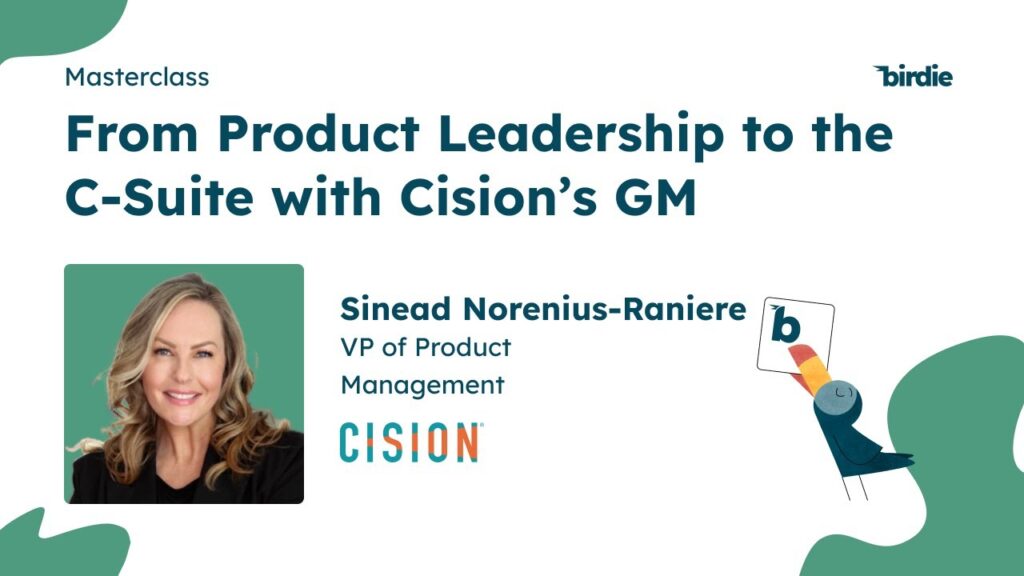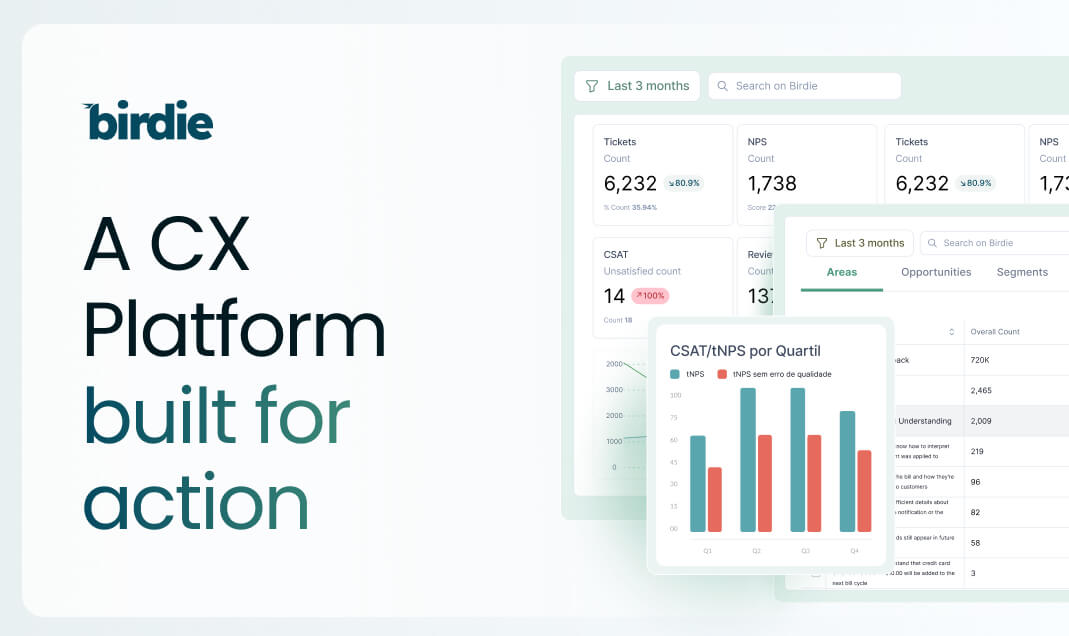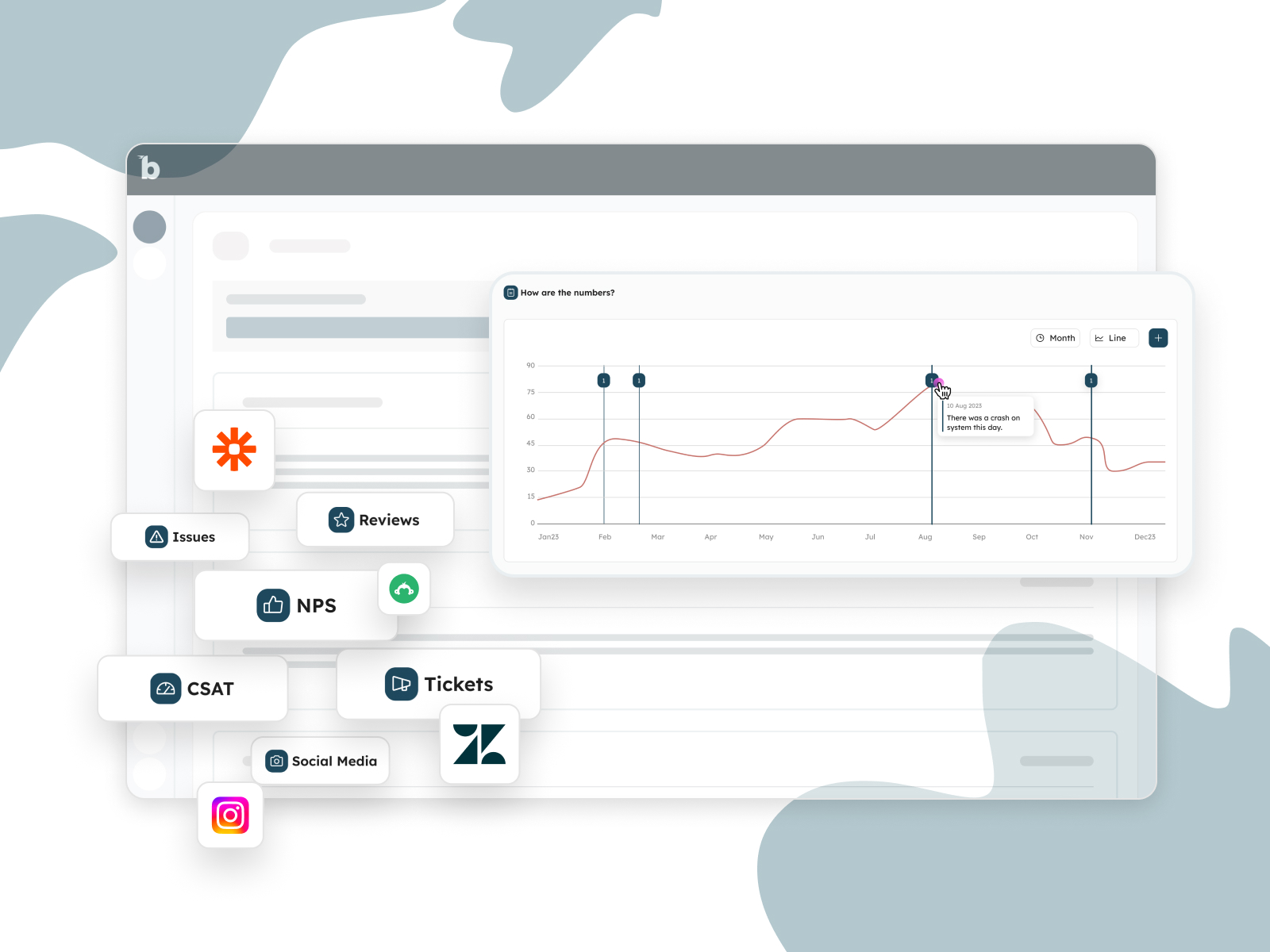

The journey from a product management role to a leadership position in the C-suite is a dynamic and rewarding path that requires careful planning, skill development, and continuous growth. In this blog post, we'll delve into the insights shared by Sinead, the Vice President of Product Management at Cision, on how to navigate this complex career transition successfully.
The Foundation of Product Management
Product management is a multifaceted role that sits at the intersection of technology, business, and user experience. It equips professionals with a diverse skill set, making it an ideal stepping stone for those aspiring to enter the C-suite. Sinead highlighted several critical skills honed in product management that overlap with general management roles:
- Strategic Thinking and Vision
In product management, crafting product roadmaps that align with the company's objectives is a common task. However, in general management, you take this one step further by defining and executing broader organizational strategies. The strategic thinking and vision cultivated in product management serve as a solid foundation for these higher-level responsibilities. - Cross-Functional Collaboration and Leadership
Product managers regularly collaborate with engineering, design, marketing, and sales teams. In general management, you'll foster cross-collaboration at a higher level to achieve more holistic business goals. The ability to lead diverse teams effectively is a valuable skill that you'll carry forward. - Data-Driven Decision Making
Product managers rely on data to optimize product features and prioritize enhancements. This analytical approach extends to general management, where data informs high-level decisions impacting the entire organization. - Customer-Centric Mindset
Product managers deeply understand consumer needs and incorporate feedback into product development. In general management, prioritizing customer satisfaction becomes paramount but across all company functions. - Risk Management and Problem Solving
Product managers tackle product challenges and mitigate risks through iterative development. In a general management role, you'll navigate complex challenges that affect the entire business and devise solutions to address them.
Building Upon a Strong Foundation
Sinead highlighted that transitioning to the C-suite requires building upon this foundation by developing additional skills and attributes essential for executive leadership. Here's how you can further prepare for the transition:
- Balancing Long-term Vision and Short-term Goals
As a product manager, you've likely balanced immediate product enhancements with long-term strategic vision. This skill becomes even more critical in executive roles, where you orchestrate the intricate dance between short-term financial goals and overarching organizational vision. - Managing Complex Stakeholder Relationships
Product managers become adept at managing stakeholders with diverse priorities. In the C-suite, you'll interact with an even broader spectrum of stakeholders, including investors, board members, and regulatory bodies. Your ability to align their interests, drive consensus, and communicate effectively is pivotal. - Financial Acumen
While you may not have had profit and loss (P&L) ownership as a product manager, understanding financial aspects becomes crucial as you move up the corporate ladder. You need a macroscopic view of the company's profit and loss statement (P&L) and financial operations. - Navigating Uncertainty and Ambiguity
Product management often involves dealing with dynamic and ambiguous situations. This adaptability prepares you for making decisions in the face of uncertainty, a common challenge in executive roles.
Challenges on the Path
Sinead acknowledged that this career transition isn't without its challenges. Here are some common hurdles and strategies to overcome them:
- Shift in Mindset
Transitioning from a specialized role to a generalist role requires a shift in mindset. Embrace the broader responsibilities and adapt to the changes in your role. - Overcoming Bias
Some may perceive product managers as having limited capabilities. Counter this bias by showcasing your cross-functional experience and leadership potential. - Skill Augmentation
Continuously enhance skills necessary for general management, such as financial acumen, leadership, and adaptability. Seek opportunities for skill development both within and outside your current role. - Adaptability
Develop adaptability as a core skill, as executive roles demand the ability to navigate uncertainty and complexity. Embrace uncertainty as an opportunity for growth.
Creating Your Path Forward
To successfully navigate the transition from product management to the C-suite, you need a strategic and deliberate approach. Here are steps to help you on this journey:
- Continuous Learning
Commit to learning and professional development. Stay informed about industry trends, emerging technologies, and business acumen. Attend workshops, webinars, and conferences to broaden your perspective continually. - Personal Branding
Craft your personal brand to showcase your evolving skill set and unique perspective on leadership. Leverage platforms like LinkedIn, contribute to thought leadership articles, and seek public speaking opportunities. - Relationship Building
Expand your network both within and outside your organization. Building strong relationships increases your visibility and opens doors to new opportunities. - Mentorship and Sponsorship
Identify mentors and sponsors who have successfully transitioned into general management or the C-suite. Their guidance and support can be instrumental in your journey. - Entrepreneurship
Take on projects within your organization that require cross-functional collaboration and innovative thinking. Propose initiatives aligned with broader business goals to showcase your leadership capabilities. - Elevated Responsibility
Volunteer for leadership roles beyond your product-focused responsibilities. Demonstrate your willingness to embrace broader responsibilities and tackle multifaceted challenges. - Adaptability
Recognize that adaptability is a core trait for success in executive roles. Embrace uncertainty as an opportunity for growth and use your prior skills as a product manager as a foundation for addressing complex challenges.
The transition from product management to the C-suite is an exciting and achievable goal. Sinead's insights and guidance provide a roadmap for success, emphasizing the importance of skill development, adaptability, and strategic planning. Whether you're working in a startup or a large enterprise, the principles outlined in this blog post can help you navigate this dynamic career path.
Remember that every step you take now contributes to your future success as a leader in your organization. Embrace the challenges and opportunities that come your way, and never stop learning and growing. The path to the C-suite is within reach for those who are willing to put in the effort and follow a strategic plan for career advancement.

Request demo








